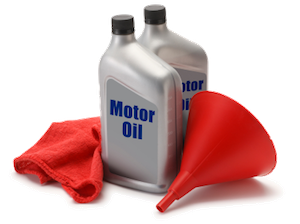home | e-mail | terms of use
oilspecifications.org
Introducing the SAE 8 and SAE 12 Viscosity Grades
On January 20, 2015 the Society of Automotive Engineers, better known by its acronym as SAE added two new viscosity grades to its most popular viscosity classification system defined under the SAE J 300 standard. The new viscosity grades are SAE 8 and SAE 12 defining new limits for future engine oils built for even better fuel economy.
Both SAE 8 and SAE 12 are operating temperature viscosity grades so they have minimum and maximum limits regarding their low shear rate kinematic viscosity at 100 °C and minimum limits regarding their high shear rate viscosity at 150 °C. For a motor oil to meet SAE 8 requirements its low shear rate kinematic viscosity at 100 °C must be between 4 and 6.1 mm2/s while its high shear rate viscosity must be at least 1.7 mPa*s at 150 °C. In case of SAE 12 the low shear rate KV must be in the 5.0 - 7.1 mm2/s range, while the high shear rate viscosity must be 2.0 mPa*s or higher. The low shear rate KV limits for SAE 8, SAE 12 and SAE 16 overlap to allow greater flexibility in lubricant design.
| SAE Viscosity Grade | Low-Temperature (°C) Cranking Viscosity cP max. | Low-Temperature (°C) Pumping Viscosity, cP max with no yield stress | Low-Shear-Rate Kinematic Viscosity (cSt) at 100 °C min. | Low-Shear-Rate Kinematic Viscosity (cSt) at 100 °C max. | High-Shear-Rate Viscosity, cP at 150 °C min. |
|---|---|---|---|---|---|
| 8 | - | - | 4.0 | <6.1 | 1.7 |
| 12 | - | - | 5.0 | <7.1 | 2.0 |
| 16 | - | - | 6.1 | <8.2 | 2.3 |
Excerpt from SAE J 300
These new viscosity grades allow the formulation and production of lubricants that enable better fuel economy. Honda was the first automaker to request the introduction of these new grades after having completed successful tests using oils with similar parameters. While these new viscosities certainly set the path for motor oil development for the time being you will not find any SAE 8 or SAE 12 oil on the shelves. And even when there will be actual products meeting these specs they will only be suitable for engines designed with these oils in mind. Other engines, including most older ones would not be well enough protected with these very thin oils.
For information about SAE 16 read our previous article The SAE 16 Viscosity Grade. For information about SAE viscosities in general read our earlier article What is Oil Viscosity?


